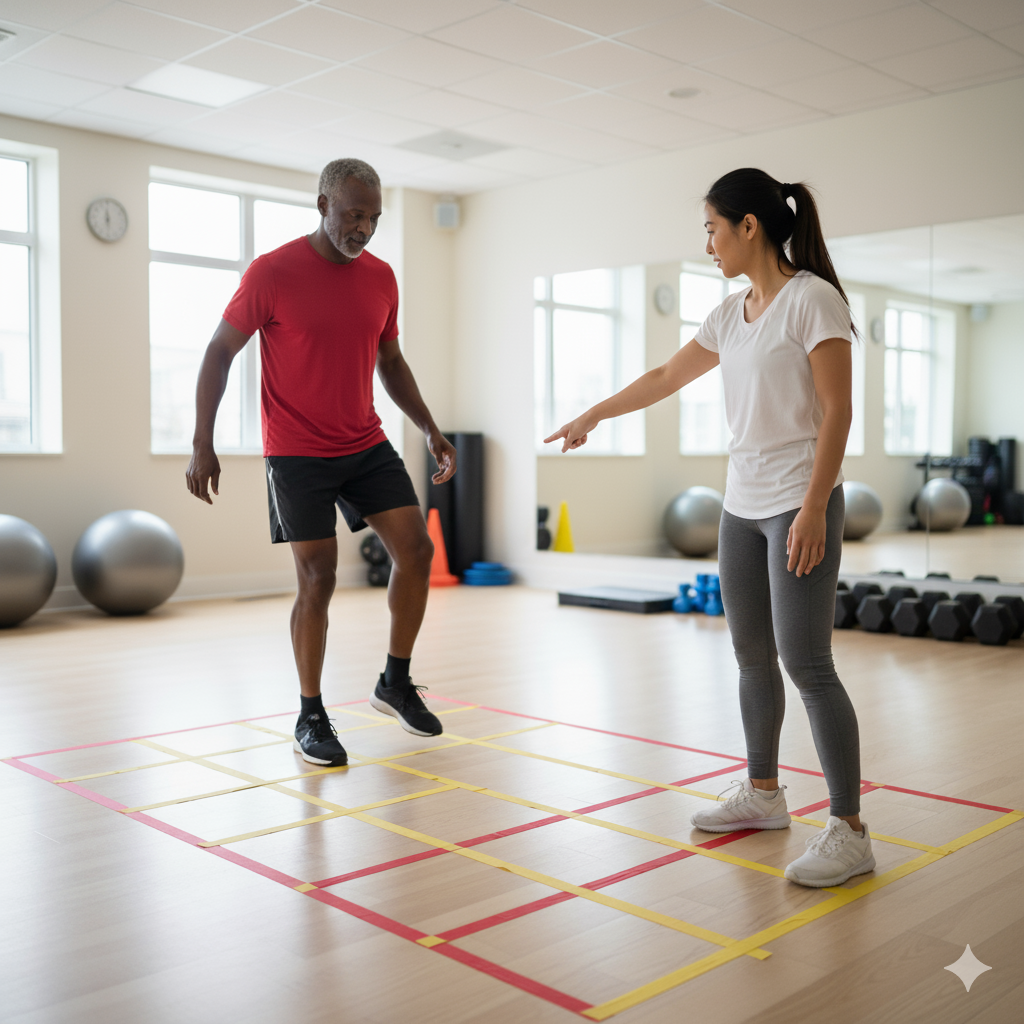

Have you ever tripped and caught yourself just in time? That quick reaction, when your body automatically adjusts to keep you upright, is your reactive balance at work.
For people living with Parkinson’s disease, that natural response can slow down over time. When the brain struggles to send fast movement signals to the body, it becomes harder to react quickly to slips or sudden shifts. This can increase the risk of falls and make everyday tasks feel uncertain.
The encouraging truth is that reactive balance can be improved. With consistent training, you can retrain your brain and body to respond faster, recover stability, and move more confidently.
At The Center for Movement Challenges, we integrate reactive balance training into our in-person and online Parkinson’s programs. It is one of the most effective and empowering ways to restore confidence and safety in movement.
Reactive balance is your body’s ability to respond automatically when something throws you off balance.
Examples include:
Your muscles and nervous system work together in a fraction of a second to prevent a fall. For people with Parkinson’s, this response can be delayed, which makes falls more likely.
Reactive balance training strengthens these fast, automatic reactions through specific, targeted exercises.
Parkinson’s affects balance through several interconnected factors:
Over time, many people start to rely on cautious or restricted movements, which can actually make balance worse. The goal of reactive balance training is to break that pattern by teaching the body how to respond naturally again.
Reactive balance exercises often involve unpredictable or surprising movements that force your body to respond quickly and safely.
Here are some examples used in our Parkinson’s programs:
Stand with your feet shoulder-width apart. Have a partner gently nudge your shoulders forward, backward, or to the side. Your goal is to react instantly by stepping in the right direction to regain balance.
If you do not have a partner, practice shifting your weight quickly in different directions to simulate the same effect.
Use a soft ball or lightweight object. Toss it in the air or have a partner throw it slightly off-center. Reach and catch while keeping your feet stable. This builds reaction time, coordination, and balance together.
Stand in place while someone calls out “front,” “back,” “right,” or “left.” Move your foot in that direction immediately and return to center. This trains your brain to process cues quickly, which helps during real-life balance challenges.
Create a grid with tape on the floor. Practice stepping forward, backward, and sideways when a cue is given. Vary the speed and order to improve adaptability and reaction control.
Research shows that balance reactions can be improved through repeated exposure to mild, controlled instability. Over time, your body learns to anticipate changes and recover faster.
Studies published in Movement Disorders and Parkinsonism and Related Disorders have found that people with Parkinson’s who practice reactive balance exercises show:
This type of training taps into neuroplasticity, the brain’s ability to form new connections and relearn skills. With the right practice, your brain can literally rewire itself to respond faster.
At The Center for Movement Challenges, our certified instructors use structured programs that combine reactive balance drills with strength and mobility exercises. Our goal is to help you move better and feel safer doing everyday activities.
You can participate in:
Each session focuses on improving both physical reactions and mental processing, creating a full-body learning experience.
If you want to try simple reactive balance exercises at home, remember:
If you are uncertain about your safety or ability, start with guided instruction first.
Losing balance can feel discouraging, but it does not have to define your movement. Reactive balance training gives you the tools to recover faster, move more confidently, and prevent falls before they happen.
Every time you challenge your balance, your brain learns, adapts, and grows stronger.
Your balance can improve with training and the right support. Join one of our Parkinson’s-specific classes, available both in person and online, and start practicing movements that rebuild confidence and control.
Visit www.centerformovementchallenges.org to find a class that fits your needs and goals.
You can react faster, move steadier, and feel stronger. Let’s make that happen together.

